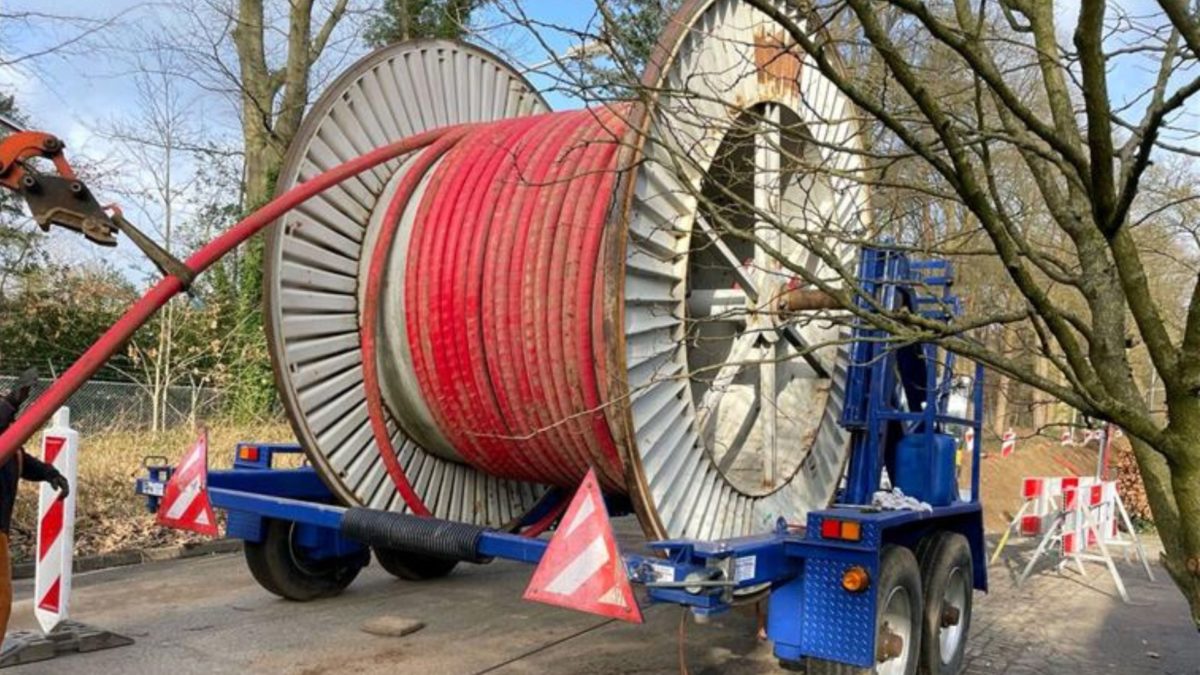Cable pulling is exactly you think it is. It is the installation of a cable from one point to another, often through open trenches and ducts, to connect a power supply from the mains to a where new electrical supply is required. Though it sounds simple, there are complex factors to take into consideration.
The number of infrastructure projects that require cable installation is surprising. The installation of cables often requires several hundred metres of cable to be installed at a time, in various environmental conditions.
Before the winch became the standard apparatus for this application, these cable installations were commonly accomplished by hand, which put those with the task in hand at serious risk of injury. Using a winch today will save you time, money and drastically reduce the chance of serious injury.
Our blog explores the basics of cable pulling and the factors to take into account when you are working with this piece of equipment on your next project.
Types of Cable Pulls
When it comes to cable pulling, it can mean anything from installing a small diameter fibre optic data cable in a sub duct, to landing a large diameter HV power cable from an offshore vessel to an onshore installation or a windfarm.
Preparing for a Cable Pull
Cables are delivered on large wooden or steel drums, these need to be supported by a drum dispenser that allows them to rotate freely, uncoiling the cable in a controlled manner. All cable routes should be pre-checked for obstructions prior to install. These pre-checks are commonly known as proofing, pigging, brushing, or cleaning.
Cable Pulling in Extreme Weather Conditions
When working in cold temperatures, extra caution should be taken. Cable can become brittle and less flexible in the cold, it’s always advisable to check the certification supplied with the cable to see what temperature parameters the cable should be installed in, extra caution should also be considered when temperatures are extremely high.
Reduce Potential for Cable Friction
Ensure trenches and ducts are clear, obstructions left in the cable route can increase the friction on the cable making it susceptible to damage. It is always recommended to use cable lubricants to lower the pulling friction, especially if bends of any type are in the cable path.
Calculate the Pulling Tension
Before any pull, you need to be sure the tension exerted onto the cable will be within the accepted manufacturers limits. Cable tension can be increased by a variety of factors, which is why it is so important to set the winch within these parameters before you start. To calculate the pulling tension, you need to know the cable weight including drum, the number of bends, the angle of any bends, if lubrication is being used, and if there are any pre-exiting cables installed.
What to Look Out for During a Cable Pull
If all the pre-installation checks have been carried out including proofing etc, then there is less of a chance of damage occurring during the pull. For cable pulls that involve directional changes or where multiple cables will be installed into a single duct, it is even more important to monitor the pull. Data monitoring equipment is common on most standard winches these days, however, check with your supplier if you require this, especially when your client is requesting proof of data. Winches can be supplied with data monitoring that record, tension, distance, and speed. Each pull can be printed individually, or the data can be supplied via a USB stick as evidence the project was successful.
If you would like to know more about the best equipment for your cable pulling, you can contact our team today on 01773 603997 or email sales@rotrexwinches.co.uk. Alternatively, you can also use our Contact Form for a prompt response. Let’s make your project a success!

